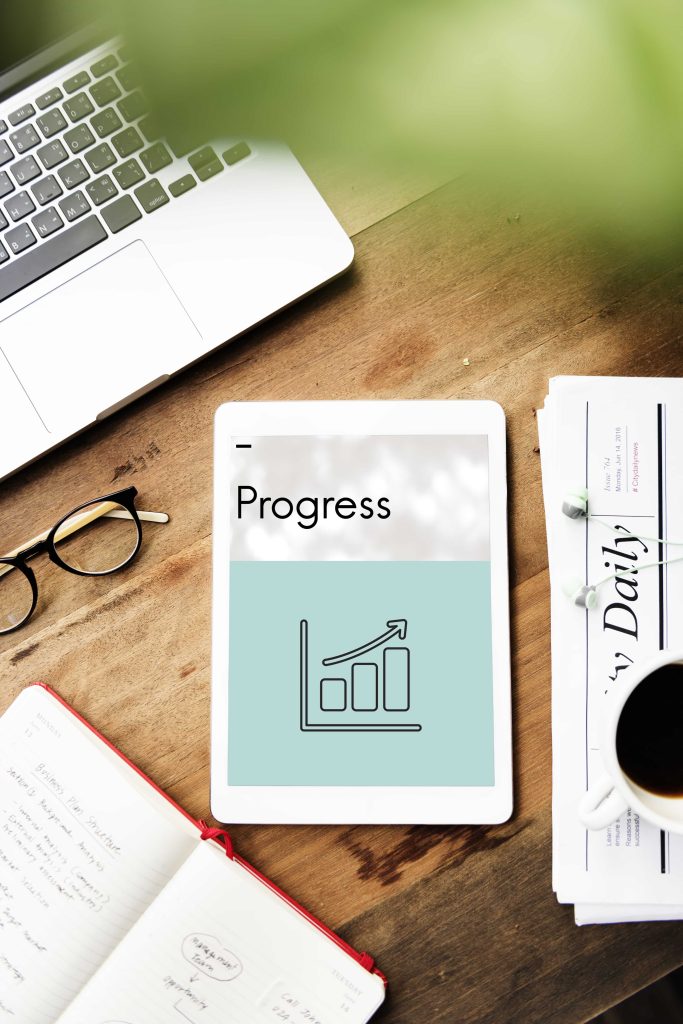
The “say-do gap” in sustainability refers to the difference between what individuals or organisations claim to do (or “say”) in terms of sustainability and what they actually do (or “do”). This gap can occur due to a lack of accountability, a lack of resources, or a lack of commitment to sustainability.
For example, an individual might claim to be environmentally conscious and recycle regularly, but they may still drive a gas-guzzling car and not make an effort to conserve energy in their home. Likewise, a company might claim to be committed to reducing its carbon footprint, but in reality, it may not have implemented any meaningful changes to its operations.
Closing the say-do gap in sustainability is important because it helps to ensure that individuals and organisations are held accountable for their actions and that their actions align with their stated values. Firms can achieve this by setting specific, measurable sustainability goals, regularly monitoring progress towards these goals, and making any necessary adjustments to ensure progress.
Overcoming the Barrier to the Say-Do Gap
To pinpoint and comprehend the obstacles to behaviour change, we utilised our behavioural science framework, MAPPS, which stands for Motivation, Ability, Processing, Physical and Social. This was beneficial for three key reasons:
- It is a comprehensive framework of the factors that underlie behaviour. It considers the internal and external factors influencing behaviour, such as motivation, capability, and physical and social environment.
- This enabled us to evaluate all the various influences on behaviour.
- The different categories of the MAPPS framework lead to ‘intervention building blocks’, which focus on designing practical solutions. This assisted us in practically implementing the principle that people are motivated to act but need support to do so. With this framework, we identified some of the key barriers to implementing sustainable behaviours and ways to overcome them.
Motivation

One of the major barriers to action is the lack of personal responsibility. When it comes to addressing climate change, businesses may not feel a sense of ownership or accountability, which can impede their motivation to take action.
Individuals tend to shoulder a large amount of personal responsibility for combating climate change, with the majority feeling that if they don’t act now, they will be letting down future generations. However, many enterprises feel they are already doing more than their fair share.
A key factor that influences responsibility and motivation is identity. Research has shown that our sense of self plays a crucial role in shaping our decisions and actions. Therefore, if we don’t perceive our workplace as a business willing to take eco-friendly measures, we are less likely to do so ourselves.
Ability
Businesses’ ability to carry out a desired behaviour is often overlooked, and sustainability can be a particularly challenging area. But to create a real impact, businesses must add to the basic actions of recycling and packaging by considering a wide range of sustainability factors such as fair trade, organic carbon impact, and total waste generated. Only then can we gauge the extent to which business models are inclined to reduce the discrepancy between the say-do gap.
An adequate solution is to use ‘schema management’, which allows businesses to integrate new information into their existing framework for understanding the world. By developing guidance informed by mental mapping and reference point evaluation, companies can critically evaluate the various information they encounter and determine whether it represents low-grade or outdated guidance.
Processing

As we shift away from a limited perception of cognitive processing, it’s important to acknowledge the obstacles that businesses encounter when it comes to understanding sustainable behaviours. For instance, some organisations may view climate change as a distant and uncertain threat, which decreases its perceived importance and does not create a strong sense of urgency.
Climate change is already causing the displacement of more people than conflicts, but only a small percentage of people are aware of this. As a result, the risks associated with climate change do not disrupt businesses’ thinking about how their choices contribute to these risks.
Additionally, even when businesses adopt more sustainable practices, self-interest, such as loss aversion – the tendency to focus more on avoiding losses than making gains – can make it difficult to change due to the perception of losing out, especially when the alternative lacks clear benefits.
The gap between what we believe and what is true is an essential aspect of the say-do gap that is often overlooked but vital for both industry and government to address. It is imperative to establish clear ways to navigate the different benefits of sustainable behaviours.
Physical
While enterprises across different sectors may want to conduct business more sustainably and may have the ability to do so, certain situations they find themselves in might not be conducive to this goal or even discourage it, leading to several problems. For example, let’s look at recycling; businesses might find it impossible to recycle, including limited recycling infrastructure, contaminated materials, technical challenges, limited demand for recycled materials, legal restrictions, and limited capacity. In these cases, work can be done to examine how the environment can be restructured to facilitate the behaviour.
Beyond the structural environment, costs and availability are factors that have an impact in a physical sense. Often, the more sustainable options incur a higher financial cost and aren’t as readily available compared to less sustainable alternatives. Many individuals cite this as a barrier to adopting more environmentally-friendly behaviours.
Social

The social element of this framework reflects on the tendency of people to be less likely to enact a behaviour they believe to be at odds with a group norm. After all, if nobody else is making careful, sustainable behaviours (including brands and governments), what is the point of one enterprise doing it? Reinforcing the norm of environmentally-conscious behaviour is therefore critically important.
It is vitalto remember that each company is responsible for contributing to protecting the environment and reducing its impact. Even if other companies are not taking action, implementing sustainable measures can bring benefits such as cost efficiency, improved reputation, and compliance with regulations. Furthermore, increasing consumer demand for environmentally friendly products and services can create new opportunities for companies that adopt sustainable practices.
Strategies for Industries to Close the Say-Do Gap
By implementing the following strategies, industries can help to close the say-do gap in sustainability and ensure that their actions align with their stated values.
1. Set Specific Measurable Goals to Close the Say-Do Gap

Industries can take a proactive approach to sustainability by identifying areas for improvement by conducting a sustainability assessment, setting specific and measurable goals, and pursuing progress using sustainability metrics. But to achieve these goals, industries have to take the initiative to develop a comprehensive sustainability plan which outlines the targets, actions and a timeline to accomplish the goals.
Establishing a sustainability team or appointing a sustainability officer to oversee the implementation of the plan can help track the progress over time. Regular monitoring and reporting of progress will ensure that any necessary adjustments are made to meet the goals. Further, companies can monitor and track their sustainability performance and identify opportunities for improvement by employing tools such as energy management systems and sustainability management software. This will not only enable them to stay transparent with the public but also maintain accountability, thus ultimately working towards achieving their sustainability goals.
2. Implement Transparency and Accountability Measures

To identify areas for improvement and set specific and measurable sustainability goals, industries can conduct a baseline assessment. A baseline assessment is a process of evaluating an organisation’s sustainability performance to establish a benchmark or a starting point for future improvements or changes. This process includes measuring and analysing data on various sustainability metrics such as energy and water usage, waste, greenhouse gas emissions and other environmental and social impacts. The data collected is used to identify areas where improvements can be made and set specific, measurable goals. This assessment serves as a starting point for future sustainability efforts, and it is done periodically to track progress over time and measure the effectiveness of sustainability initiatives.
Sustainability is a broad topic, and it can be challenging for companies to address all areas effectively. To close the say-do gap, companies must focus on the most critical issues by conducting a materiality assessment. This process involves identifying the sustainability issues that are most important to the company and its stakeholders. By using appropriate sustainability standards and frameworks, companies can determine their ultimate sustainability goals, which will benefit both parties. By narrowing down the plans to the most material issues, companies can prioritise their efforts and make a more significant impact.
Further, to conduct a comprehensive sustainability assessment and set specific, measurable goals, companies must conduct regular life cycle assessments to understand the environmental impact of their products or services and use the criteria obtained from benchmarking to compare their performance with similar organisations and identify areas where they excel and areas where they can improve.
3. Incorporate Sustainability Into Business Operations

Incorporating sustainability into business operations is crucial for industries to meet sustainability goals and mitigate environmental impact. One of the ways to do this is by implementing sustainable practices such as reducing energy and water usage, reducing waste and sourcing materials and products from sustainable sources.
Any meaningful effort to combat climate change will require companies to address one especially vital resource — water. The United Nations warned that by 2030, the gap between water supply and demand would reach 40%. However, the World Resource Institute later estimated it could go as high as 56%. Industries must take concrete action to address this problem, as global water use, storage, and distribution contribute to 10% of global greenhouse gases. Furthermore, 150 companies alone directly impact one-third of the world’s freshwater use, making it imperative for businesses to turn their commitments into tangible actions and results by implementing energy-efficient technologies and equipment, implementing water conservation measures, and promoting energy and water conservation among employees. This will not only help reduce the environmental impact but also lower the company’s operating costs.
But limiting yourself to sustainably producing products isn’t going to help unless you source materials and products from sustainable sources. Companies must aim to achieve this by implementing sustainable procurement policies and prioritising materials and products that are produced in an environmentally friendly way. This will only help to reduce the environmental impact but also promote sustainable practices in the supply chain.
For instance, by choosing to purchase products from Orapi’s e-shop, customers can align their actions with their company’s commitment to sustainability. Our products are formulated with environmentally friendly and biodegradable ingredients, and are produced with the utmost care for the environment. Additionally, we hold certifications like the ECOVAADIS Sustainability Rating, which confirms our adherence to strict environmental standards, thus enabling customers to make a tangible impact on closing the gap between what a company says and does
By implementing these sustainable practices, industries can decrease their environmental footprint and enhance their sustainability performance, which in turn will help them achieve their sustainability objectives as well as bridge the gap between their stated and actual commitments.
4. Collaboration and Partnership

Collaboration and partnership are key strategies for industries to accelerate the adoption of sustainable practices and technologies and to share knowledge and best practices. By joining forces with other organisations, governments, and nonprofits, enterprises can leverage the resources, expertise, and networks of these partners to achieve their sustainability goals more effectively. This type of collaboration can take many forms, such as joint research projects, shared resource pools, co-development of new technologies, or joint marketing and outreach efforts. Additionally, by partnering with organisations with complementary skills and expertise, industries can gain access to new perspectives and ideas that can help drive innovation and improve their sustainability performance. Collaboration and partnership can be powerful tools for sectors to facilitate the transition to a more sustainable future and close the say-do gap.
5. Invest in Sustainable Technologies

In 2021, the electricity sector was a major contributor to GHG emissions globally. According to the United Nations Environment Program, the energy supply accounted for about 37% or 20 GtCO2e of the total energy-related GHG emissions in 2020. Despite this, it is surprising to hear how little effort businesses have taken to proactively invest in sustainable technologies to reduce their environmental impact and lower costs. Gladly, though, we are starting to witness a change for the better as companies like ORAPI are adopting sustainable technologies such as renewable energy, energy storage and resource efficiency that have helped us significantly reduce the use of fossil fuels, decrease greenhouse gas emissions, and conserve natural resources.
Investing in renewable energy sources such as solar, wind, or hydroelectric power can aid industries in reducing their dependence on fossil fuels and lowering their carbon footprint. Energy storage solutions, such as batteries, can also play a vital role in integrating intermittent renewable energy sources into the grid and improving energy efficiency. Similarly, investing in resource-efficient technologies can help industries lower their consumption of natural resources such as water, materials, and energy, make them more competitive in the marketplace and allow them to meet their sustainability goals.
Overall, investing in sustainable technologies is a win-win situation for industries as it will help reduce their environmental impact, lower costs, and improve their performance.
6. Educate and Engage Employees

Educating and engaging employees on sustainable practices and policies is a vital step for industries to promote sustainable behaviour within the organisation. By providing employees with the knowledge and skills needed to understand the impacts of their actions and how they can contribute to sustainability, industries can empower them to make more sustainable choices in their work and personal lives.
One way for businesses to educate and engage employees is through training and development programs. These programs can focus on topics such as energy and water conservation, waste reduction, and sustainable procurement. By providing employees with the knowledge and skills they need to understand the impacts of their actions and how they can contribute to sustainability, industries can empower them to make more worthwhile choices in their work and personal lives.
Another way to engage employees is through employee engagement programs. These programs can include initiatives such as sustainability champions, green teams, or employee volunteer programs. These programs allow employees to take an active role in promoting sustainable behaviour within the organisation and to have a sense of ownership and pride in the company’s sustainability efforts.
Industries can also communicate their sustainability goals and progress to employees through internal communications channels such as newsletters, employee portals, or sustainability reports. This helps employees to understand their company’s sustainability efforts and how they can contribute to achieving them.
At ORAPI, we regularly communicate ways for our team to incorporate more eco-friendly practices in their daily routine through various social media platforms like LinkedIn, Facebook, and Instagram. In addition, we consistently urge all employees to close the divide between the say-do gap by making small changes that can make a big impact on the environment.
Conclusion
In conclusion, the say-do gap refers to the difference between what—individuals or—companies say they will do and what they actually do in terms of sustainability. Several barriers, such as lack of motivation, ability, proper processing, and physical and social influences, cause this gap. To bridge this gap, companies can take several measures, such as setting specific, measurable goals, implementing transparency and accountability measures, incorporating sustainability into business operations, fostering collaboration and partnership, investing in sustainable technologies, and educating and engaging employees. By addressing these barriers and implementing these measures, companies can take meaningful steps towards closing the say-do gap and making a positive impact on the environment. Companies need to take ownership of their environmental impact and recognise that sustainability is not only good for the planet but also good for business.














